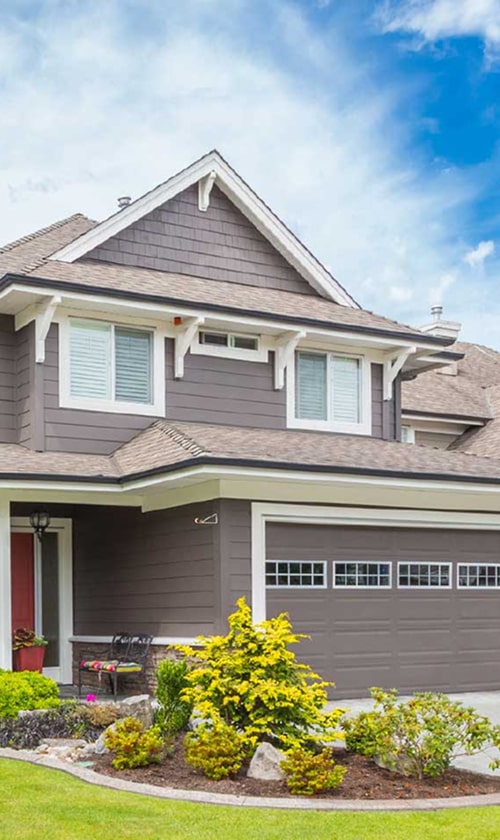Understanding Heat Pump Sizing
Choosing the right heat pump size is essential for efficient heating and cooling in our homes. The correct fit helps maintain comfort, saves energy, and extends the life of our equipment.
Why Proper Sizing Matters
Proper heat pump sizing makes a big difference in our daily comfort and energy bills. A heat pump that is too small will have trouble keeping rooms warm in the winter and cool in the summer. It may run longer to reach the temperature we set, which increases energy use and wear on the unit.
If the heat pump is too large, it may heat or cool rooms too quickly. This can cause it to turn on and off more often, leading to uneven temperatures and higher humidity indoors. Correct sizing means the system runs longer cycles, which helps control both temperature and moisture.
We want our heat pump to last as long as possible. A properly sized unit does not work too hard, which means fewer breakdowns and a longer working life for our equipment.
Key Factors Influencing Heat Pump Size
Several important factors affect what heat pump size fits our home. The main points we need to look at include:
- Square footage: Larger spaces need bigger heat pumps.
- Insulation: Good insulation keeps heat in or out, lowering the size needed.
- Climate: Cold or hot areas may require larger or more powerful units.
- Windows and doors: More windows or drafty doors let heat escape or enter, which can impact sizing.
- Number of floors: Multi-story homes may need a different approach than single-story homes.
Most HVAC professionals use a Manual J load calculation to check these factors. This method adds up everything in our house that affects heating and cooling needs. We should not guess or use only square footage, as that can lead to the wrong choice.
Risks of Incorrect Sizing
Having an oversized heat pump can lead to short cycling, where the unit switches on and off often. This wastes energy and does not remove enough humidity, making our homes feel sticky or uncomfortable. Oversized heat pumps also cost more to buy and install.
A unit that is too small will struggle during extreme temperatures. It may never reach the comfort level we want, and energy bills can increase as the system works harder than it should.
Both incorrect options put more stress on the heat pump’s parts, which may lead to more breakdowns, expensive repairs, and a shorter system lifespan. When sizing heat pumps, careful calculation and attention to our home’s details are very important to avoid these risks.
Essential Calculations and Methods
Getting the right heat pump size means knowing how to measure our home’s heating and cooling needs. We need the right calculations to make sure our system works efficiently without wasting energy or money.
Manual J Calculations Explained
Manual J calculations are the industry standard for sizing heat pumps. This method measures the specific heating and cooling needs for our house. It considers factors like square footage, insulation, window type, ceiling height, and climate.
We use detailed data to figure out how much heat is lost or gained. This calculation helps avoid choosing a system that is too big or too small. Over- or undersized equipment leads to poor temperature control and higher bills.
A trained professional usually does Manual J calculations because accuracy is critical. They use special software or worksheets to run the numbers. A proper Manual J calculation ensures reliable comfort and energy savings year-round.
BTU and Ton Requirements
BTUs (British Thermal Units) tell us how much heat or cooling a system can provide per hour. Most heat pumps are sized in either BTUs or tons, where 1 ton equals 12,000 BTUs. Matching the BTUs and tons to our home’s needs is essential for effective performance.
Typical BTU Requirements Table
| Home Size (sq. ft.) | Cooling BTUs Needed | Tons Needed |
|---|---|---|
| 600–1,000 | 18,000 | 1.5 |
| 1,000–1,500 | 24,000 | 2.0 |
| 1,500–2,000 | 30,000 | 2.5 |
| 2,000–2,500 | 36,000 | 3.0 |
We should always check the BTU or ton rating before choosing a heat pump. Picking the wrong size can lead to frequent cycling or uncomfortable rooms.
Heat Load and Cooling Load Calculations
Heat load calculation shows how much heating we need on a cold day. Cooling load calculation tells us the cooling needed during summer’s hottest periods. Both loads depend on our climate, how well our house is built, the amount of sunlight, and even how many people live in the home.
To estimate the load, we calculate:
- Area of each room
- Insulation quality
- Size and type of windows
- Internal heat sources (appliances, lights)
We add up “gains” for cooling (like solar heat through windows) and “losses” for heating (such as drafts or poor insulation). This step makes sure our heat pump matches the highest demand, so comfort is consistent through all seasons.
Using a Heat Pump Size Calculator
Online heat pump size calculators are helpful tools. They use our home’s square footage, insulation type, location, and other details to estimate the right system size. We enter values into the calculator for a quick estimate.
Even though these calculators are convenient, they might not capture all the details that Manual J calculations do. They’re best for getting a rough idea or for double-checking figures.
For the most reliable results, we should still consult a certified professional and use a heat pump sizing chart. This ensures our final choice is based on both careful calculation and real-world conditions.
Key Home and Environmental Factors

To choose the right heat pump, we need to understand our home’s layout, construction, leakiness, local climate, and the amount of sunlight our home receives. These factors can all affect how much heating or cooling we need and what size system will work most efficiently.
Evaluating Home Size and Square Footage
The size of our home is one of the most important details to get right. Heat pumps are rated by the amount of space they can heat or cool, which is usually measured in square feet.
We need to measure the area of each room and add them together to get our total square footage. Most systems offer guidelines based on square footage, such as:
| Home Size (sq. ft.) | Approximate Heat Pump Size (BTUs/hour) |
|---|---|
| 600 – 1,000 | 18,000 – 21,000 |
| 1,000 – 1,500 | 24,000 – 30,000 |
| 1,500 – 2,000 | 30,000 – 36,000 |
It’s important to remember that other features, like ceiling height, also change the total volume we need to heat or cool, so we should note if we have vaulted or high ceilings.
Assessing Insulation and Air Leakage
Good insulation keeps heat in during the winter and out during the summer. Our home’s insulation quality can either make our heat pump work efficiently or force it to run longer than necessary.
We should check if our walls, attic, and floors are well insulated using materials like fiberglass, foam board, or blown-in insulation. Gaps around windows, doors, and electrical outlets can lead to air leakage, which lets warm or cool air escape.
Simple checks include feeling for drafts, looking for gaps in caulking, and red flags like cold spots near windows in the winter. Weatherstripping doors and sealing any leaks can make a major difference in heat pump sizing and in comfort.
Considering Climate and Climate Zones
Where we live affects how hard our heat pump has to work. If we’re in a colder climate zone, our heat pump needs to produce more heating power. If we live where summers are hot, cooling will be a higher priority.
Here are some typical U.S. climate zones:
- Zone 1: Very hot, humid (e.g., South Florida)
- Zone 3: Mixed, average winters (e.g., Washington, D.C.)
- Zone 5: Cool, cold winters (e.g., Chicago)
- Zone 7: Very cold (e.g., Northern Minnesota)
Knowing our local climate helps us choose a model made for those conditions. In regions with big temperature swings, we may need a more powerful system or even back-up heating. We should always check what climate zone we’re in using maps from the U.S. Department of Energy or local building codes.
Calculating Sun Exposure and Temperature Differences
The amount of direct sunlight our home gets changes how much heating or cooling we need. Rooms on the south or west side may get more sun and overheat in summer, while shaded areas stay cooler.
We should look for:
- Large south-facing windows that let in a lot of sunlight.
- Trees or buildings that cast shade at different times.
- Dark roofs or walls that absorb rather than reflect heat.
Temperature difference, or how much warmer or cooler we want our home to be compared to the outside, is also key. If we want our house warm on freezing days or cool on super-hot days, that big difference means our heat pump will need to work harder. Combining sun exposure with insulation lets us make smarter choices about heat pump size and placement.
Choosing Your Heat Pump for Installation
Selecting the right heat pump depends on several factors, such as our local climate, home size, and how much heating and cooling we need throughout the year. We also want to choose equipment that fits well with our existing hvac system and helps manage energy costs.
Matching Heating and Cooling Requirements
To find the best fit, we first look at our heating and cooling needs. A heat pump that is too large wastes energy and costs more to run. Too small, and it won’t keep us comfortable.
We need to calculate the number of British Thermal Units (BTUs) required for our home. Factors affecting this include the home’s square footage, insulation levels, and the number of windows and doors. Local climate also plays a large role, as colder regions may need a higher capacity heat pump.
Having an hvac professional complete a Manual J load calculation ensures our heat pump matches our home’s specific heating and cooling requirements.
Comparing Ducted and Hybrid Heat Pumps
Ducted heat pumps work with existing ductwork to deliver heating and cooling through vents in different rooms. These are common in newer homes or those with a central hvac system. They offer even distribution of air but may lose energy if the ducts are old or poorly sealed.
Hybrid heat pumps combine an electric heat pump with a backup heating system, like a gas furnace. This type is useful in colder climates where a heat pump alone may not be efficient. A hybrid system can switch between electric and gas heat to maintain comfort and energy efficiency.
We should consider our current hvac setup and local weather patterns when deciding between ducted and hybrid options.
Estimating Energy Consumption and Costs
Knowing how much energy a heat pump will use helps us predict future energy bills. Efficient heat pump models have high SEER (Seasonal Energy Efficiency Ratio) and HSPF (Heating Seasonal Performance Factor) ratings. The higher the rating, the less energy the unit uses for the same amount of heating or cooling.
We can compare estimated yearly energy costs using manufacturer datasheets or online calculators. It’s important to remember that hybrid systems might use more gas in winter, while ducted systems rely only on electricity.
Making a table of energy costs for two or more models can help us choose the most energy-efficient option:
| Heat Pump Type | Estimated Yearly Cost | SEER Rating | HSPF Rating |
|---|---|---|---|
| Ducted | $700 | 16 | 9 |
| Hybrid (Gas/Electric) | $600 | 15 | 8.5 |
Choosing the right unit can help us lower our energy bills while keeping our home comfortable.
Ensuring a Successful Installation
A quality heat pump installation relies on choosing the correct equipment size, working with experienced HVAC professionals, and keeping an eye on long-term performance. By focusing on these details, we can prevent common errors, reduce costs, and keep our home comfortable year-round.
Consulting HVAC Professionals and Contractors
Bringing in licensed HVAC professionals and contractors helps us avoid sizing mistakes that harm system performance. They use specific methods, like Manual J load calculations, to assess our home’s needs instead of guessing or using rough estimates.
An experienced contractor checks factors such as our home’s square footage, insulation, number of windows, and local climate. This leads to a more accurate sizing decision. It’s helpful to ask about their credentials, references, and approach to heat pump installation.
When we trust the experts, we minimize risks such as short cycling, uneven indoor temperature, and poor humidity control. Qualified contractors also help us understand local building codes, manufacturer warranties, and efficient system options.
Requesting Accurate Quotes and Estimates
We should never settle for a vague quote or verbal estimate. Instead, it’s smart to request a written quote that details the size of the recommended heat pump, installation costs, labor fees, and any extra items or work that might be needed.
A good estimate includes all expenses, helping us plan our budget and avoid hidden costs. It’s best to request quotes from at least two or three contractors to compare equipment sizes and pricing. This makes it easier to spot over- or under-sized recommendations.
Checklist for Quotes:
- Equipment size (in BTUs or tons)
- Cost breakdown (equipment, labor, permit fees)
- Warranties and guarantees
- Any recommended additional work, such as duct repairs
Clear and detailed estimates make it easier to select the right product and company, saving us money in the long run.
Monitoring Performance and Maintenance
Once the system is installed, we need to monitor how well our heat pump heats and cools our home. A well-sized system should maintain a steady indoor temperature and run smoothly without shutting off and restarting too often (short cycling).
Regular maintenance helps prevent future problems. We should check filters every month, have our ducts inspected, and schedule yearly professional checkups. If our utility bills rise unexpectedly or the system struggles to keep the home comfortable, these can be signs of inaccurate sizing or the need for a tune-up.
Basic maintenance tasks:
- Replace or clean filters monthly
- Inspect outdoor unit for debris
- Schedule a yearly HVAC appointment
Staying on top of performance and maintenance supports energy savings and increases the life of our heat pump.
Common Sizing Mistakes to Avoid
Avoiding common mistakes helps us keep our home comfortable and energy bills under control. Some of the most frequent errors include guessing the size based only on square footage, not considering ceiling height, or failing to account for local climate.
Oversized systems can cause short cycling and may wear out faster. Undersized units struggle to keep up during very hot or cold days, making us uncomfortable and pushing up our energy costs.
Frequent mistakes include:
- Ignoring insulation quality
- Forgetting about large windows or air leaks
- Copying a neighbor’s system size
By focusing on accurate sizing and professional advice, we increase comfort and protect our investment in a new heat pump.




